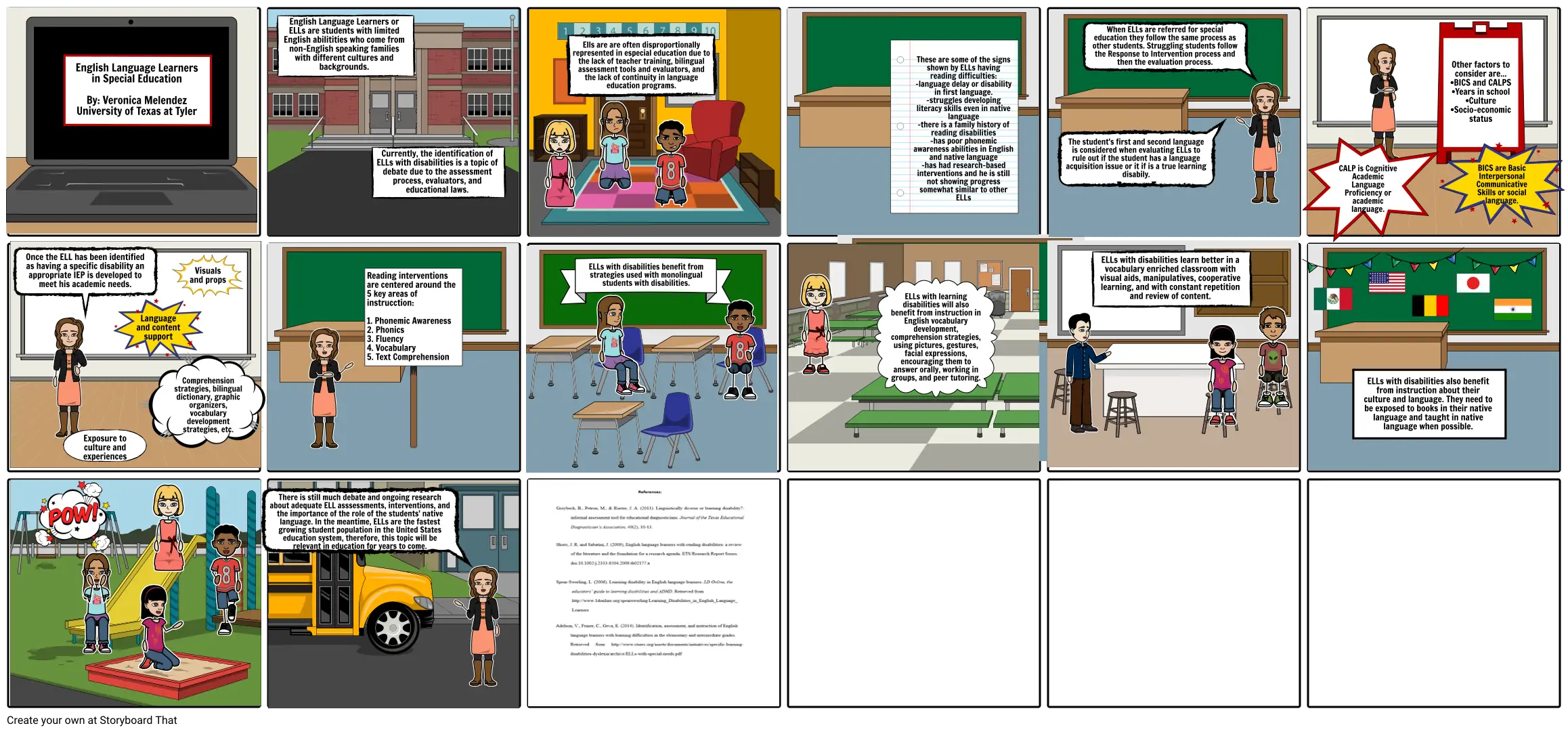English Language Learners with Reading Disabilities

Storyboard Text
- English Language Learners in Special Education By: Veronica Melendez University of Texas at Tyler
- English Language Learners or ELLs are students with limited English abilitities who come from non-English speaking families with different cultures and backgrounds.
- Currently, the identification of ELLs with disabilities is a topic of debate due to the assessment process, evaluators, and educational laws.
- Ells are are often disproportionally represented in especial education due to the lack of teacher training, bilingual assessment tools and evaluators, and the lack of continuity in language education programs.
- These are some of the signs shown by ELLs having reading difficulties: -language delay or disability in first language. -struggles developing literacy skills even in native language -there is a family history of reading disabilities -has poor phonemic awareness abilities in English and native language -has had research-based interventions and he is still not showing progress somewhat similar to other ELLs
- The student's first and second language is considered when evaluating ELLs to rule out if the student has a language acquisition issue or it if is a true learning disabily.
- When ELLs are referred for special education they follow the same process as other students. Struggling students follow the Response to Intervention process and then the evaluation process.
- CALP is Cognitive Academic Language Proficiency or academic language.
- Other factors to consider are... •BICS and CALPS •Years in school •Culture •Socio-economic status
- BICS are Basic Interpersonal Communicative Skills or social language.
- Once the ELL has been identified as having a specific disability an appropriate IEP is developed to meet his academic needs.
- Exposure to culture and experiences
- Language and content support
- Comprehension strategies, bilingual dictionary, graphic organizers, vocabulary development strategies, etc.
- Visuals and props
- Reading interventions are centered around the 5 key areas of instrucction: 1. Phonemic Awareness 2. Phonics 3. Fluency 4. Vocabulary 5. Text Comprehension
- ELLs with disabilities benefit from strategies used with monolingual students with disabilities.
- ELLs with learning disabilities will also benefit from instruction in English vocabulary development, comprehension strategies, using pictures, gestures, facial expressions, encouraging them to answer orally, working in groups, and peer tutoring.
- ELLs with disabilities learn better in a vocabulary enriched classroom with visual aids, manipulatives, cooperative learning, and with constant repetition and review of content.
- ELLs with disabilities also benefit from instruction about their culture and language. They need to be exposed to books in their native language and taught in native language when possible.
- There is still much debate and ongoing research about adequate ELL asssessments, interventions, and the importance of the role of the students' native language. In the meantime, ELLs are the fastest growing student population in the United States education system, therefore, this topic will be relevant in education for years to come.
Over 30 Million Storyboards Created
No Downloads, No Credit Card, and No Login Needed to Try!
